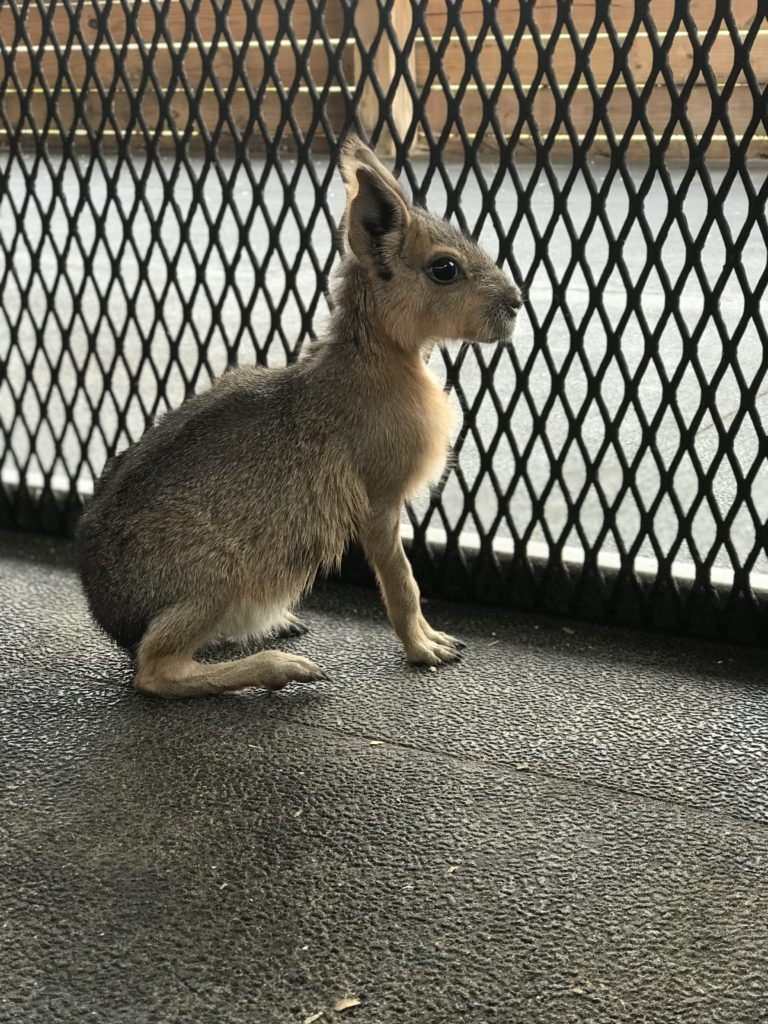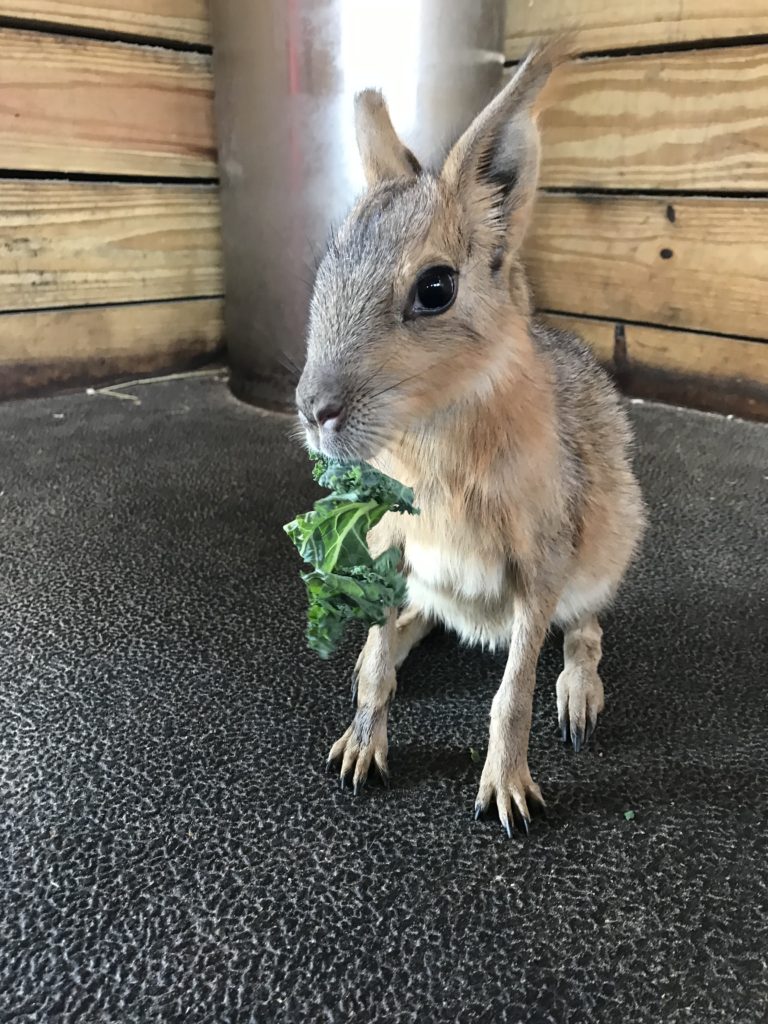The Patagonian Mara, also known as a Patagonian Cavy, is the fourth largest rodent in the world behind the Capybara, Beaver and Porcupine. These unusual looking creatures are distant relatives to guinea pigs and somewhat resemble a cross between a rabbit and a small deer. Their longer ears resemble a rabbit, and their small compressed feet can look like hooves from a distance. When moving Patagonian Maras closely resemble a deer; walking, hopping and running at speeds up to 30 mph. These animals are avid diggers with extremely strong hind legs that allow them to jump horizontally, up to 7 feet high and run extremely fast.


Patagonian maras are long-legged rodents with bodies similar to hoofed animals. Their coats — which are stiff, dense and very fine in texture — are primarily gray-brown, with a white patch along the chest and stomach and orange coloration around the flanks and head.
A bottle-raised maras bond easily to their humans and is generally not flighty, timid or easily startled. Young maras are called pups and a group of maras is known as a creche.
The lifespan of a Patagonian Mara in captivity is approximately 14 years. Their lifespan in the wild is unknown.
Patagonian maras average 27.5 inches in length, with a tail length of 1.5 to 2 inches . Adult Patagonian maras weigh 18-35 pounds, reaching the size of a medium-sized dog.
Patagonian maras are herbivorous, primarily consuming grasses. They also frequently consume cactuses, as well as some seeds, fruits and flowers.
Maras also ingest their own dung to maximize nutrient absorption. At Weisberg Stables our maras are fed rodent chow, greens, cactus pads, fruits, vegetables, and grass hay.
Patagonian Maras are monogamous animals. The female mara sexually mature at 8 months of age and enters into estrus three to four times each year, for a window of only 30 minutes, causing the maras to have unique breeding habits. The male spends as much time as possible with his one female to assure that he does not miss his opportunity to breed. Another benefit of monogamy within the specifies is that it allows females
Gestation lasts around 100 days, with the female typically giving birth to 1-3 pups with two pups being most common.
Most maras in the wild will only produce one litter per year. Whereas maras raised in captivity can give birth up to four times each each year. Offspring are born out in the open but are quickly transferred into a communal burrow. This burrow can be shared with as many as 15 different mara pairs and their offspring.
Because males are fiercely protective of their mates, only one mara pair occupies the burrow at any given time. With many young inhabiting the den, female maras recognize their offspring by size, sound and scent communication. Pups may attempt to steal milk from unrelated females, although they are often forcefully driven away. Females take on almost all direct care of their young, while males serve as sentries, protecting the den from potential predators. Young maras will nurse for much longer than most other rodent species — about 75 days — before being weaned.
Patagonian maras are diurnal animals built for running. While many maras may live together communally they travel in mated pairs and only one pair will occupy a single burrow at a time.
Hunting and habitat loss are the two of the greatest threats to Patagonian maras. Patagonian maras are listed as near threatened on the IUCN Red List, as of a 2008 analysis. The Red Book of Mammals of Argentina also categorizes this species as vulnerable.